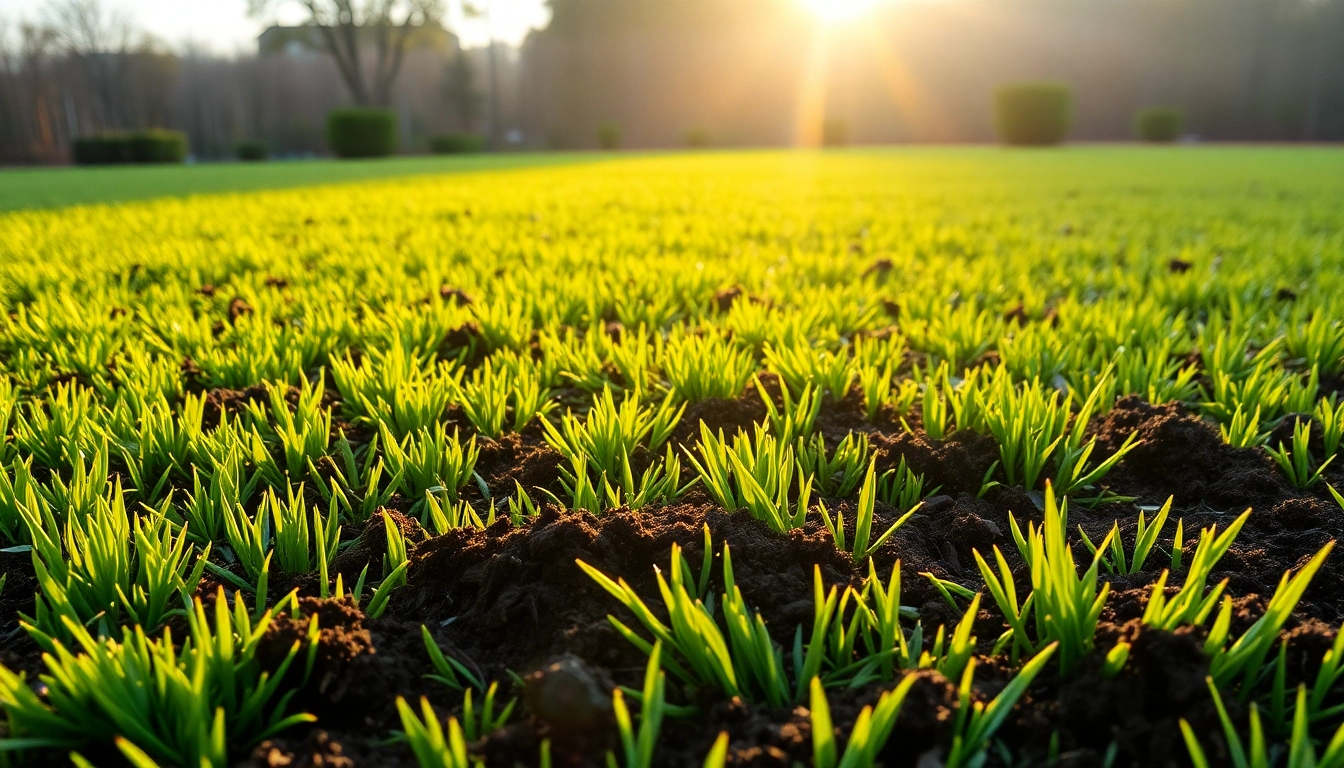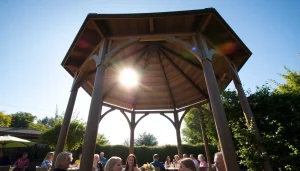Introduction to Lawn Top Dressing
Lawn top dressing is a crucial lawn care technique that can significantly enhance the health and appearance of your yard. By adding a thin layer of material to the soil surface, you can revitalize your lawn, improve soil quality, and promote healthy grass growth. Proper lawn top dressing entails specific techniques and timing to reap maximum benefits. This guide will delve into what top dressing entails, its benefits, the right materials to use, and the best practices for application.
What is Lawn Top Dressing?
Lawn top dressing can be defined as the process of applying a mix of organic and inorganic materials to the surface of the lawn. Typically composed of compost, soil, and other organic matter, this thin layer is intended to enhance soil structure, improve nutrient availability, and promote better moisture retention. Top dressing can also help level out uneven surfaces, smooth out rough patches, and bury thatch, which is a layer of dead grass that can hinder growth.
Benefits of Lawn Top Dressing
The benefits of lawn top dressing are manifold, making it a highly recommended practice in lawn care:
- Improved Soil Quality: Adding nutrient-rich compost enhances the microbiome of the soil, providing essential nutrients that plants need to thrive.
- Better Drainage: A mix of sand can improve drainage in compacted soils, reducing runoff and creating a healthier environment for roots.
- Thatch Control: By working top dressing into the soil, you can help break down excess thatch that can suffocate grass.
- Correcting Uneven Surfaces: Top dressing can fill in low spots and provide a more level lawn surface.
- Improved Grass Growth: Enhanced soil conditions promote root growth and overall vigor, contributing to a lush, green lawn.
Common Materials Used
Several materials can be utilized for top dressing, each serving unique purposes:
- Compost: Often the preferred choice, compost enriches the soil with nutrients and promotes biological activity.
- Topsoil: Fine, quality topsoil can provide a good base for growth but should be mixed with compost for best results.
- Sand: Helps with drainage and leveling, particularly beneficial for clay-heavy soils.
- Peat Moss: Useful for improving soil moisture retention.
When to Perform Lawn Top Dressing
Best Timing for Top Dressing
Timing is essential for effective lawn top dressing. The ideal time is usually during the growing season, which varies based on the climate and grass type. For most cool-season grasses, early spring and early fall are optimal. Warm-season grasses thrive on early summer top dressing. However, avoid top dressing in the late fall or dead of winter when grass is dormant.
Seasonal Considerations
In your region, seasonal variations can affect how well top dressing works:
- Spring: A popular time to top dress, as grass begins to grow actively, and the nutrients can stimulate quick recovery.
- Summer: Ideal for warm-season grasses, this is the time to repair damage from heat stress.
- Fall: Excellent for cool-season grasses; top dressing in fall supports root growth before winter.
Signs Your Lawn Needs Top Dressing
It’s not always obvious when to conduct top dressing. Look for these signs that suggest your lawn could benefit:
- Soil specimens display poor drainage, pooling water.
- Presence of brown patches or a thinning lawn.
- Accumulation of heavy thatch layers.
- Uneven lawn surfaces that require leveling.
How to Prepare for Lawn Top Dressing
Choosing the Right Materials
Choosing your materials based on your lawn’s needs is essential for successful top dressing. Consider the existing soil quality, grass type, and climate conditions. For instance, if your lawn suffers from poor drainage, you may want to focus on materials that improve compacted soil and promote better water flow, such as sand mixed with organic matter.
Assessing Lawn Quality Before Dressing
Before applying any top dressing material, evaluate the current state of your lawn:
- Conduct a soil test to check pH levels and nutrient content.
- Inspect the turbidity of the soil in various areas; consistency indicates overall health.
- Check for existing pests or diseases that may affect lawn vitality.
Tools Needed for Effective Application
Having the right tools is crucial for efficient top dressing. Consider acquiring the following:
- Garden rake or landscaping rake for spreading materials.
- Drop or broadcast spreader for even distribution.
- Shovel for moving bulk materials.
- Wheelbarrow for transporting soil or compost.
- Spray nozzle or hose for watering down the area post-application.
Step-by-Step Guide to Lawn Top Dressing
Preparing the Lawn Surface
Before applying top dressing, prepare the surface. Mow the grass to a lower height than usual, as a shorter turf helps ensure even coverage. Remove any debris, rocks, and weeds that might interfere with the dressing application. If your lawn hasn’t been aerated recently, this is the time to do so because it encourages top dressing materials to penetrate the soil better.
Applying the Top Dressing Evenly
Even application is key to successful top dressing:
- Using a shovel, load material onto your spreader or rake.
- Start applying from one side of the lawn and work your way across in rows.
- Aim for a thin layer, generally between ¼ inch to ½ inch thick. This thickness helps avoid smothering the grass underneath.
Post-Application Care for Your Lawn
Post-top dressing care is as important as the application process itself. Water your lawn lightly to help the top dressing settle and to activate nutrients. Avoid heavy watering immediately, as this may wash away the materials. Monitor your lawn for growth, making sure it remains consistent and healthy.
Advanced Tips for Lawn Top Dressing
Combining Top Dressing with Aeration
For maximum benefit, consider aerating your lawn before top dressing. Aeration removes small cores of soil, allowing better air passage and moisture access to grassroots. When you top dress after aeration, the dressing can filter down into these holes, improving soil quality more effectively than applying top dressing alone.
How Often Should You Top Dress?
Frequency can depend on several factors, including soil condition, lawn use, and climatic conditions. Generally, top dressing once a year is adequate for most lawns. However, lawns that experience heavy use or significant wear may benefit from biannual top dressing sessions, especially if recovery is needed.
Case Studies: Successful Lawn Transformations
Many home and commercial spaces have experienced remarkable transformations through regular top dressing. For example:
- Case Study 1: A local golf course reported enhanced green quality and player experience after adopting a consistent top dressing schedule, boosting property aesthetics.
- Case Study 2: A residential property that underwent extensive lawn renovation noted reduced soil compaction and improved drainage within weeks of applying a quality compost mix on previously barren ground.


